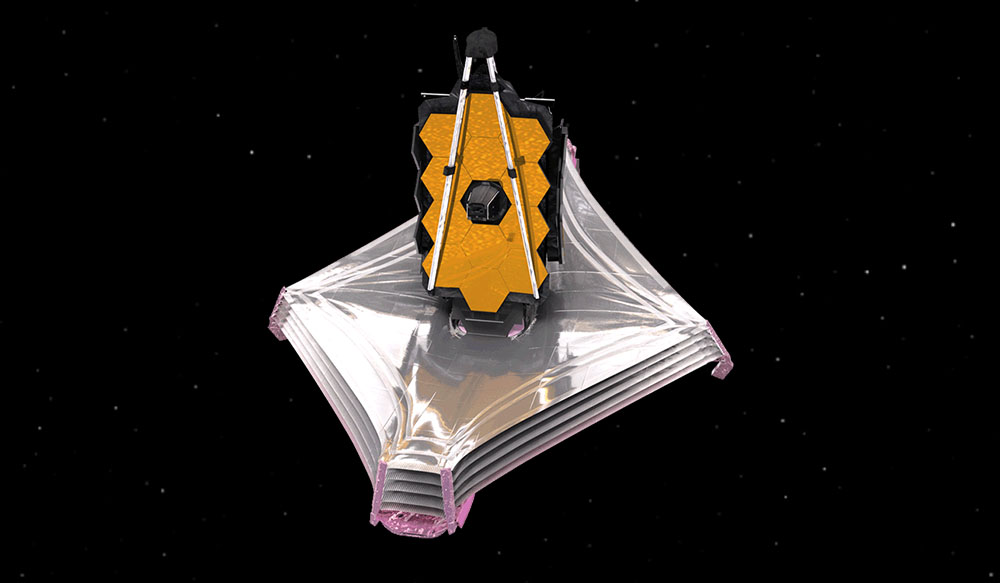Day 9: A Pause, and then Sunshield Tensioning Begins

The year 2021 ended for the Webb Telescope in a nominal way. “Nominal” is spacecraft lingo for “everything is going just as it should” and that’s great! Both sides of the telescope’s sunshield’s booms (arms) were pulled out without any problems. This included the firing of 107 pins that ALL needed to work perfectly for the sunshield to deploy correctly. Happy New Year Webb!
The boom deployments ended late on New Year’s Eve, so the Webb teams took the next day to rest up. On Sunday, January 2, the team reassessed the status of the spacecraft and made some adjustments to the solar panels and motors for tensioning the sunshield. It is standard procedure to measure the telescope spacecraft systems in real-time to see how they are functioning.
Both the solar panels and motors are nominal today, so the “sunshield tensioning” began.
Webb’s sunshield is made up of 5 layers, each of which must be tightened and separated from the others. This allows optimal cooling for Webb’s scientific instruments and mirrors. The first layer to be tightened is the largest and warmest layer, the one closest to the sun. It will be pulled into its tensioned position very slowly by a system of motors and pulleys. Over the course of the next 2 to 3 days the other layers will also be tensioned, one by one, until the entire sunshield is in place.
The final deployment of the sunshield will be a great achievement for the Webb team and will ensure optimal science from Webb for many years to come. We will be watching for confirmation when it is complete.
UDPATE Jan 3: NASA announced the first of the 5 layers tensioning is complete. It is now taut and in its final position. Four more to go! Read more on the NASA blog.
LATE UPDATE: Tensioning for layers 2 and 3 is now also complete. From NASA:
“The team began the second layer at 4:09 pm EST today, and the process took 74 minutes. The third layer began at 5:48 pm EST, and the process took 71 minutes. In all, the tensioning process from the first steps this morning until the third layer achieved tension took just over five and a half hours.”
Incredible progress!
